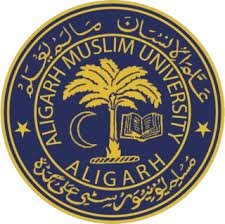Overview
Aligarh Muslim University (abbreviated as AMU) is a public central university in Aligarh, Uttar Pradesh, India, which was originally established by Sir Syed Ahmad Khan as the Muhammadan Anglo-Oriental College in 1875. Muhammadan Anglo-Oriental College became Aligarh Muslim University in 1920,[3] following the Aligarh Muslim University Act. It has three off-campus centres in AMU Malappuram Campus (Kerala), AMU Murshidabad Centre (West Bengal), and Kishanganj Centre (Bihar). The university offers more than 300 courses in traditional and modern branches of education, and is an institute of national importance as declared under seventh schedule of the Constitution of India at its commencement.
The British decision to replace the use of Persian in 1842 for government employment and as the language of Courts of Law caused deep anxiety among Muslims of the sub-continent. Sir Syed saw a need for Muslims to acquire proficiency in the English language and Western sciences if the community were to maintain its social and political clout, particularly in Northern India. He began to prepare a foundation for the formation of a Muslim University by starting schools at Moradabad (1858) and Ghazipur (1863). His purpose for the establishment of the Scientific Society in 1864, in Aligarh, was to translate Western works into Indian languages as a prelude to prepare the community to accept Western education and to inculcate scientific temperament among the Muslims. The intense desire to ameliorate the social conditions of Indian Muslims led Sir Syed to publish the periodical, 'Tehzibul Akhlaq' in 1870.
On 7 January 1877, Sir Syed founded the Muhammadan Anglo-Oriental College in Aligarh and patterned the college after Oxford and Cambridge universities that he had visited on a trip to England. His objective was to build a college in tune with the British education system but without compromising its Islamic values. Sir Syed's son, Syed Mahmood, who was an alumnus of Cambridge prepared a proposal for an independent university to the Muhammadan Anglo-Oriental College Fund Committee upon his return from England in 1872. This proposal was adopted and subsequently modified. Syed Mahmood continued to work along with his father in founding the college. It was one of the first purely residential educational institutions set up either by the government or the public in India. Over the years it gave rise to a new educated class of Indian Muslims who were active in the political system of the British Raj. When viceroy to India Lord Curzon visited the college in 1901, he praised the work which was carried on and called it of "sovereign importance". It was also around this time that a movement began to have it develop into a university. To achieve this goal, expansions were made and more academic programs added to the curriculum of the college. A school for girls was established in 1907. By 1920 the college was transformed into the Aligarh Muslim University. Sir Syed breathed his last on March 27, 1898 and was buried in the premises of the university mosque in the Sir Syed Hall, AMU.
Courses
Admissions
Scholarship
Placement
Cuttoff
Campus
-
College Type Public
-
Established In 1875
-
Max. Package 9 LPA
-
Fee Range 20K-32K
-
Courses Offered 32
-
NIRF Ranking 9
-
Total Faculty 15
-
Total Intake 180

